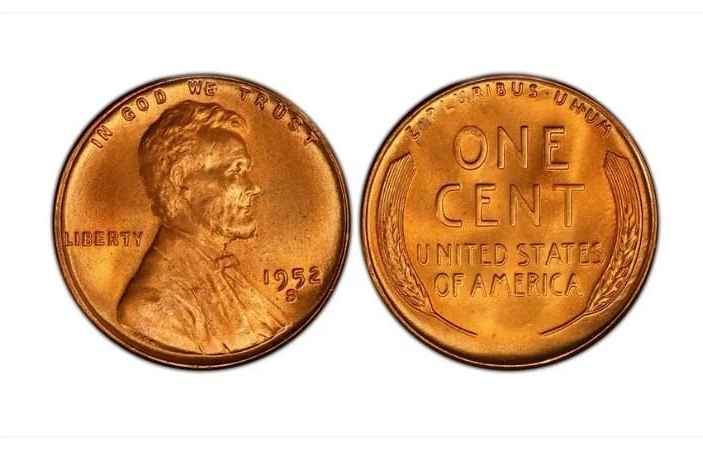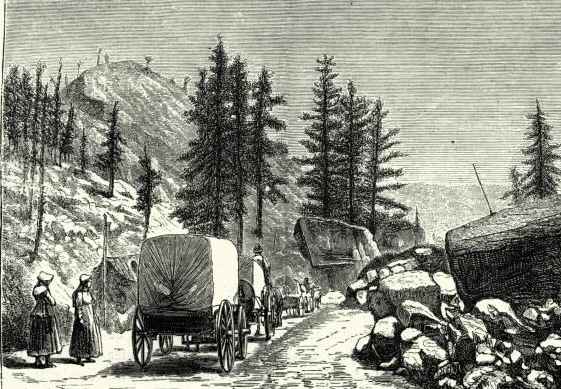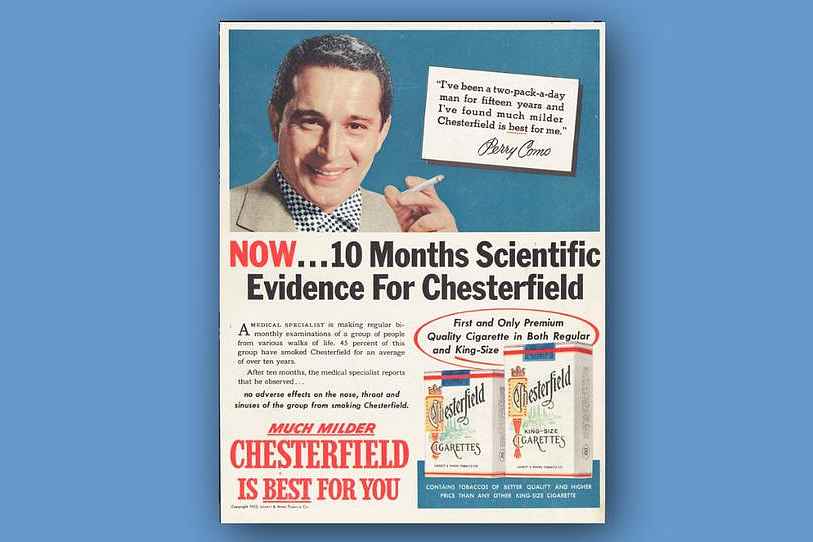






See listing of Recent and Most Popular articles on the Home Page
Learn
Category: Technology / Topics: Beliefs • History • Learning • Media • Popular Culture • Research • Science & Technology • Trust
How to Tell Science from Psuedoscience
by Natalie Wallington /Popular Science
Posted: August 13, 2022
A guide to ferreting out falsehoods…
Editor's Note: There's a lot of "science" reporting out there, but how much is solid and how much is junk, even false and misleading? The image I chose to use with this article comes from a 1950s ad for Chesterfield cigarettes touting research to affirm that smoking was good. Not only was Chesterfield the lead sponsor of one of popular singer Perry Como's programs, but the company used dozens of media stars in its ads at the time that some critics were beginning to raise questions about the safety of smoking. The Como ad is interesting because of its direct reference to scientific research ("evidence"). It's an example of the use of "science" that has only gotten more confusing with the explosion of information sources available today.
Helping to sort it out is an article by Natalie Wallington from Popular Science that we found on Pocket. Following is an excerpt, featuring the main points and opening comments for each. Use the link at the bottom of the page to read the full article and get more resources.
In our increasingly chaotic digital age, disinformation disguised as science is rampant. It’s also getting harder to detect, thanks to new technologies and politically motivated campaigns against commonly acknowledged scientific truths like vaccine effectiveness, the realities of the climate crisis, and more. Navigating the turbulent sea of online scientific and pseudoscientific information requires a sharp eye, a skeptical brain, and an openness to new ideas about the world around us.
Click the link
Your first exposure to any pseudoscientific claim will almost certainly come in the form of a catchy headline—perhaps a little too catchy. John Gregory, a researcher for the online fact-checking service NewsGuard, warns that fully capitalized words, exclamation points, or strong opinions in the headline of an article are some of the first signs that its contents may be misleading. . . .
Scrutinize the study
Science news is usually based on a specific, detailed study—a feature that sets it apart from other types of news. Ironically, this makes it both easier to verify and easier to fake. On one hand, a primary source like a recently published paper can quickly back up an article’s claims. On the other, many developments in science and medicine are fairly complex, making primary sources difficult for many readers to understand. . . .
Consider the context
Developments in the field of medicine are frequently falsified or misrepresented. This means you’ll need an extra level of scrutiny to separate fact from fiction. Often, peddlers of false info rely on a small nugget of truth to help support their claims. . . .
Check the source
A miracle cure, a government conspiracy, or a shocking revelation are all hallmarks of dubious science news—and they often pop up again and again in the same pseudoscience-peddling outlets. If a scientific claim seems suspicious, it’s worthwhile to see what other types of stories the site is posting and if the publication’s overall character throws up red flags. . . .
Question the motive
Pseudoscience, particularly in the medical field, often aims to serve a specific goal by preying upon the public’s fear. At times, this goal may be simply political—for example, denying the existence of the climate crisis may serve the agenda of a particular political party. But often, the motivation behind pseudoscience is financial in nature. . . .
Consult the experts
When you can’t quite tell whether a piece of science news is accurate, doing your own digging may be time-consuming or prohibitively complicated. That’s where fact-checkers like NewsGuard, FactCheck.org, and even us right here at Popular Science come in. . . .
Trust the court of public opinion
If you’re the type of person who takes everything with a grain of salt, it may be difficult to figure out who to trust on scientific issues. There is no perfect answer: certain individual scientists may be corrupt or misinformed, some government officials may have political agendas, and even trustworthy news outlets occasionally make mistakes. That’s why in addition to trusting the experts on science, you may also find it useful to trust the systems in our society that you recognize to be reliable, like the importance of public reputation and even human nature itself. . . .
Natalie Wallington is a contributing writer for PopSci's DIY section. Her reporting on social and environmental justice has appeared in the Washington Post, Audubon Magazine, VICE News, and elsewhere. In her spare time, she collects stationery and naps on the couch with her retired racing greyhound. Visit her website to see more of her work.
Read the full article and get other resources at Popular Science.
Search all articles by Natalie Wallington
Posted: August 13, 2022 Accessed 658 times
![]() Go to the list of most recent Learn Articles
Go to the list of most recent Learn Articles
![]() Search All Articles on the site
Search All Articles on the site
![]() Go to the list of Most Recent and Most Popular Articles across the site (Home Page)
Go to the list of Most Recent and Most Popular Articles across the site (Home Page)
 Loading requested view...
Loading requested view...